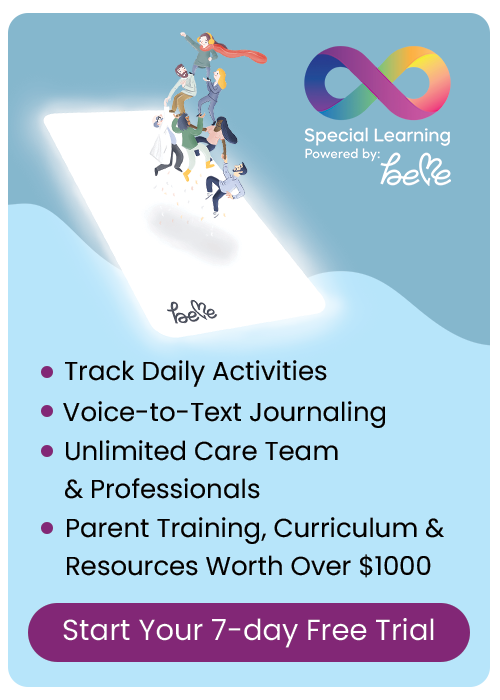Blog Categories
- ADHD
- Applied Behavior Analysis
- Autism Awareness
- Autism Service Providers
- Case Studies
- Dignosis
- Classroom Management
- Credentials
- Ethics
- Family Matters
- FAQs About LIVE Events
- Financial Planning
- Holiday Planning
- IEP's
- Panelists
- Private Equity in Autism & ABA Industry
- Psychopharmacology
- Sensory Processing Disorder
- Speech and Communication
- Subject Matter Experts
- Summer Planning
- Transition Planning
4 Simple Ways to Prevent Challenging Behavior in the Classroom
since 2009. Before that, she served as Training and Behavior Plan Supervisor, Outreach and Training Coordinator, Program Supervisor/Outreach Support Technician and Behavior Technician. During this time, she also moonlighted at Piece by Piece Consulting Services, a private consulting services firm specializing in behavioral treatment methods utilizing Applied Behavior Analysis (ABA) principles for children with Autism Spectrum Disorders as a
Behavior Consultant. At Step By Step, she is responsible for the hiring and training of all senior clinical staff members. In addition, she trains Clinic Directors on how to develop and monitor treatment and behavior plans, and teaches Clinical Assistants the principles of
ABA and monitoring procedures.
Christine regularly presents at professional conferences on topics related to autism and behavioral support. Her areas of expertise include ABA, training, Individual Education Plans (IEPs), treatment planning and behavior modification and behavior management. Additionally, she has developed autism training programs for professionals and families on a variety of topics, including ABA Principles and Procedures, The Picture Exchange Communication System, Token Economy Systems, The Maintenance and Generalization of Acquired Skills and Decreasing Challenging Behaviors.
She has a BA in Psychology and a minor in Sociology from The Ohio State University. She is a Board Certified Assistant Behavior Analyst (BCaBA) through the University of North Texas and is currently enrolled in the M.S. in ABA & Autism program at The Sage Colleges. She will graduate in the spring of 2012.
4 Simple Ways to Prevent Challenging Behavior in the Classroom
There are multiple variables that provoke challenging behavior within the classroom. Within our environment, these variables are classified as antecedents and consequences. Antecedents are events that occur prior to challenging behavior that elicits the unwanted response. Reinforcement (a consequence) is an event that occurs after the challenging behavior, resulting in maintenance of the unwanted behavior.
Antecedent → Behavior ← Consequence
The following are antecedent-based interventions, used to attempt to prevent challenging behavior from occurring in the classroom:
1. Communication is key!
Many times, challenging behavior, like aggression and tantrums are a form of communication. Your student may be trying to tell you that he wants something or that he wants something to stop. Impairment in communication is a core deficit of autism; it is important that much of the child’s education is tailored around this skill development. In addition to teaching your student functional communication skills, providing him with ample opportunities to practice this skill is important.
Allow plenty of opportunities for him to ask for what he wants in addition to allowing him to request breaks from instruction prior to the opportunity of the challenging behavior occurring. If your student is non-vocal, you will need to ensure that his picture exchange system or electronic communication device is readily available at all times.
Teaching functional communication skills and providing your students with ample opportunities to communicate will help prevent behavior that is maintained by both access to preferred items and escape from non-preferred tasks.
2. Get Organized
We all respond better when we are aware of the events that are coming up in our future. As adults, we rely on our daily calendars and to-do lists to ensure that we get everything done and stay on track. Students with autism need the same supports to be successful in completing their tasks.
Provide your student with a daily visual schedule. Your student may go from the bus to the resource room, and then leave this room throughout the day to join his general education classroom and attend specials such as music and art.
Provide your student with a vertical schedule, indicating where he will go throughout the day. Ensure the schedule is something that he can manipulate (e.g. moving an icon representing an activity from the left column to the right column upon completion of the task or check off a to-do list). This can assist your student to smooth transitions within the school’s environment.
You can also provide your student a schedule of activities that are to be completed within his classroom; these are beneficial for students who engage in challenging behavior to get out of completing assignments. It is important to assess how much work your student can complete prior to requiring a break. If, on average, your child can complete 5 assignments prior to needing a break, provide him with a schedule portraying the 5 assignments (visual cues or written) along with the available break at the end. Again, make this a schedule he can manipulate so he can learn to self-manage and increase motivation to complete the required tasks.
Continue to assess your student’s skill to determine what type of schedule he will need; Does he need a visual aid to understand the schedule or will he be successful with a written schedule? Remember to review the schedules at the beginning of the day or prior to a set of activities.
3. Catch your student being good
Challenging behavior can sometimes be prevented by determining when your student is most likely to engage in challenging behavior and rewarding him at a higher rate. This technique works well for challenging behavior maintained by attention from the teacher. If your student engages in attention-seeking behaviors that become disruptive, provide him attention at a higher rate contingent upon appropriate behavior. For example, if a child engages in screaming for your attention, praise him more frequently for staying on task, playing nicely with his friends and completing the classroom routines. Because you are providing your attention more often, this should decrease your student’s desire to engage in the challenging behavior to gain your attention.
4. Monitor the student’s “mood”
Because children with autism are sometimes unable to communicate how they feel, it is important to have constant communication with their care providers. There may be variables that are affecting your student’s behavior that you cannot observe. Students with autism may have difficulty with sleeping throughout the night, eating well balanced meals, or maintaining a healthy digestive system. In addition, children with autism are sometimes taking medication – changes or discontinuation of some medications could change your student’s behavior. All of these variables affect the child’s motivation for learning. It is important to collect this information from your student’s care provider as these events occur, so you can reduce the number of demands you are going to place on him that day. Just like anyone else, students with autism do not want to feel pushed when they are not feeling well.
—
*Please check back next week for more great strategies to prevent challenging behavior in the classroom.




